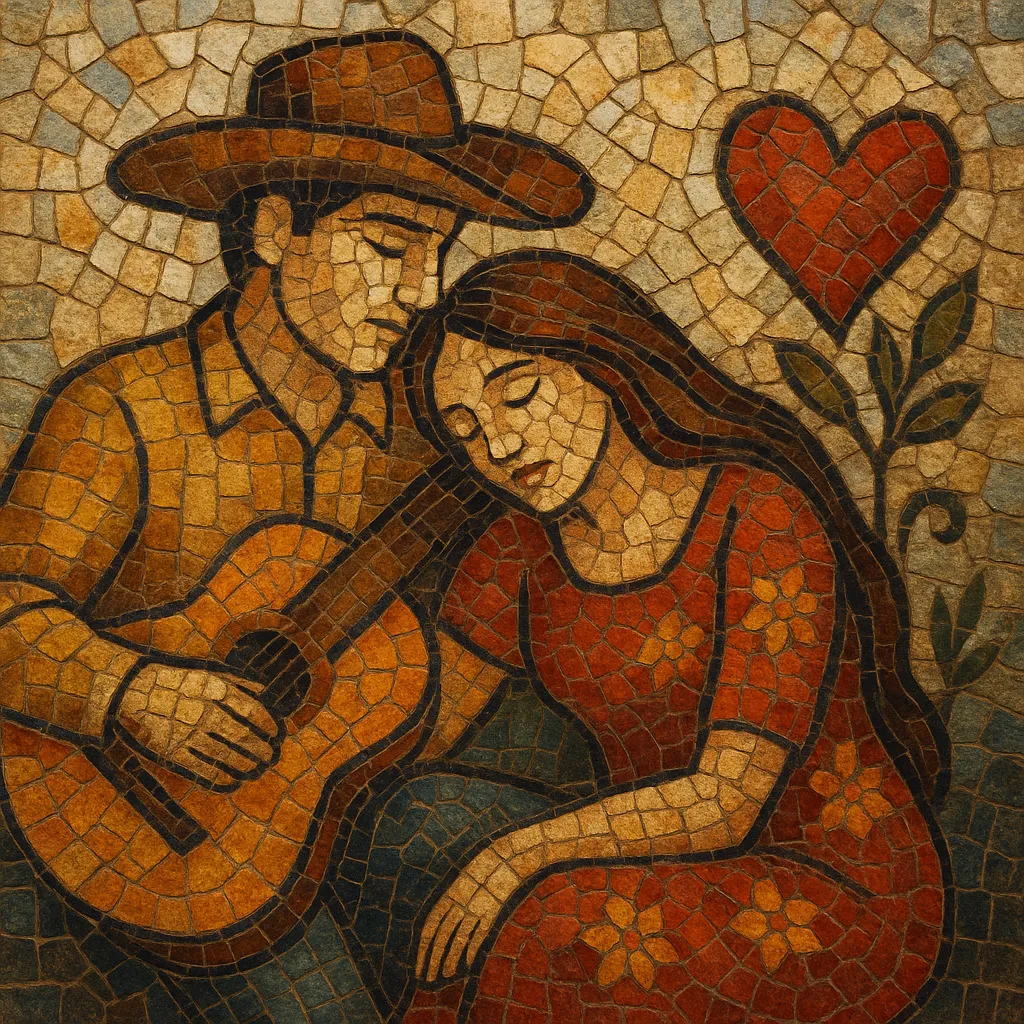Sertanejo romântico is a mainstream, pop-leaning wave of Brazilian sertanejo that emphasizes sentimental ballads, lush arrangements, and prominent vocal harmonies by duos. It softened the rural, folkloric edges of earlier "sertanejo raiz" and brought the genre firmly into national pop culture.
Typical tracks favor mid-tempo grooves, acoustic guitars, viola caipira, keyboards, and string pads, often culminating in climactic key changes. Lyrics center on love, heartbreak, longing, and reconciliation, making it one of Brazil’s definitive romantic song styles of the late 1980s and 1990s.
Sertanejo romântico emerged in Brazil during the late 1980s as a polished evolution of earlier sertanejo forms, especially "sertanejo raiz". Producers, broadcasters, and major labels helped blend rural instrumentation with pop ballad aesthetics, keyboards, and orchestral textures. Duos (duplas) became the genre’s emblematic format, leaning into tight harmonies and emotional storytelling.
The 1990s marked the genre’s nationwide breakthrough. Artists like Chitãozinho & Xororó, Zezé Di Camargo & Luciano, and Leandro & Leonardo dominated radio and television, modernizing the sound with slick production, romantic narratives, and accessible pop hooks. The style’s mass appeal turned sertanejo into a central pillar of Brazil’s music industry.
As the romantic wave’s blueprint became ubiquitous, a younger generation adapted it into "sertanejo universitário"—a college-scene–driven offshoot that kept the melodic, romantic DNA while adding fresher pop, rock, and later electronic elements. The romantic tradition also fed hybrid styles such as funknejo and helped seed regional romantic trends like arrocha.
Sertanejo romântico is remembered for transforming sertanejo into a modern pop force. Its hallmarks—duo harmonies, heartfelt ballads, and soaring crescendos—remain an essential reference for contemporary Brazilian pop and sertanejo productions.


